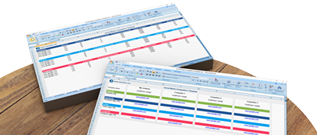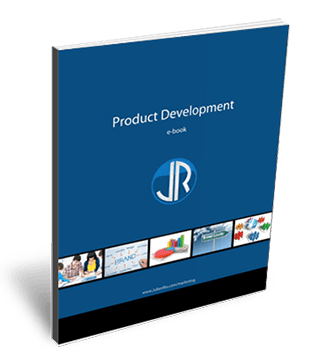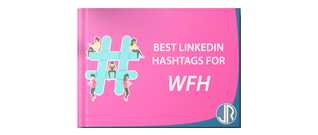Finding the right name for your product - branding strategy
How to find the perfect name for your product and how this name influences consumers' behavior. Tips and strategies for an efficient branding.
Did you hear about iPod, iPhone, iPad?
Did you hear about Galaxy S WiFi_x000D_ 5.0?
Why do you remember easily the first few names, but never heard of the other one, which is also a high quality product?
Most companies try their best creating high quality products. They provide great customer service, nice packaging, informative websites, support platforms and exciting videos to promote and sell those products.
But not all of them are successful.
Some fail because of pricing issues. Some because of choosing the wrong market or building the wrong strategy. Some might have lacked of popularity or made some management mistakes. Finally, some might just have chosen the wrong name for their product.
Product names like brand names are very important and greatly influence consumers' behavior. If choosing the right name does not ensure any sales, choosing the wrong one leads automatically to failure.
Let's see together some strategies for choosing the right name.

Product's features
Before choosing names, build a list of your product's characteristics. Those can be product's features, market specifications, keywords related to the product and its usage or brand's values.
For each of those keywords you might add a short comment or explanation and classify them by importance.
If we decided to find a name for the new phone from Apple, we could create a list such as:
- phone
- personal
- mobile
- apps
- connectivity
- connection
- network
- photo
- video
- camera
- lifestyle
- trendy
- "I"
- quality
- accessible
- trust
- haptical
- etc...
We could add a 100 more words to this list and then try to organize them in a way that would show their respective importance.
Don't neglect this step. You should actually not do it by yourself: create a small team of four to five people including yourself to brainstorm keywords. Don't let people give ideas of names yet: skipping steps would make you miss some great possible names.

To be optimal, your team should have people who participated in the product development (they will bring their product knowledge), people working in your marketing team (they will bring their branding understanding) and total outsiders who aren't familiar with the product (they will bring their customer view on it). This team will be able to build a list of various keywords that will define your products.
Connect the words
Now, take your keywords list and select 10 to 15 words that either represent your product best or that sound best.
Try to connect those words together to create a list of possible names. Try to use only the words coming from the list, but if some other names come to your mind, don't hesitate adding them as well.

Once you have brainstormed all the possible combinations (don't stop until you have at least 30 possibilities), you will have to select your most important criteria and confront each name to your criteria.
Consider the following product's name criteria:
- easy to remember (will people memorize it immediately?)
- easy to identify (does the name immediately tell you what the product is about?)
- sounds good (does the name sound good, is short and easy to pronounce?)
- trendy (does it sound trendy or old school?)
- "talks" to the market representatives (is the name meaningful for its target market?)
- corresponds to the brand's image (does the name reflect your values and the image you want to communicate?)
- easy to export to other markets (will other languages be able to pronounce it? does it has a meaning in other languages?)
- ...
You might have your own criteria and make this list much longer. The important is that any name from your list that matches all those criteria should be a perfect candidate.
Now, take each name in your list and cross out those that do not meet your most important criteria. Reduce your list to a few names only (3 to 5).
Try it!
Now that you have selected a small number of possible names, it is time for you to try them.
Create some simple "prototype" packaging of your product with their name on it then ask for a sample of market representative to give their first impression regarding the name of your product.
First, simply tell them the name without showing anything and note their first impression: what does this name evoke to them? What kind of product do they expect to get after hearing its name?
Then, show them your sample packaging and ask for their first impression again: which one is more appealing? If they had to choose one only based on the name, which product would they pick?
You can then gather the received feedback and comments and estimate which name has the best impact on people.
The internet
You now have a few names left and each of them has its own pros and cons. It is almost time for you to make a decision.
Before choosing the perfect one, you might want to go through another important step: the domain name.

Even if you did not plan to have a website yet, the day will come when you will need a website. And even if you don't, you will want to make sure that when people look for your product they don't arrive on competitors' websites.
Go to some domain name provider website and try your different combinations to see what is available and what isn't.
You should actually go even further and look for your product's name on Google to see what pops up: you might already have competitors using similar name.
Gather all data and order your possible names based on the feedback and internet results you got.
Make it legal
This is the last step before making your decision: you have only a few names left and you will choose only one. But before doing so, check if those names aren't already taken by some other companies!
Are you legally allowed to use this name? Even if you can use it on your territory, will you be able to use it in other countries if you decide to grow larger?
Those might seem like early questions and you might believe that you will have time to think about it when the time comes. But why not having the perfect name right away and saving yourself some struggles in the future if your product grows very well?
Once all those steps passed, just make your decision!
Important notes
Your product name is something that cannot change: few products will take the risk, once established, to change their name. That could be very confusing for your customers and might lead to loss of sales. For this simple reason, it is very important that you take your time when choosing your product name; Do it carefully and think it through before making any decision. You should try to anticipate potential changes in your market or in your long term strategy so that the name you choose could still be valid in the future. For example, if you could consider making a second version of your product (cf. iPhone 3, iPhone 4, iPhone 4S, iPhone 5, etc...), try to think what this new version could be called then, even if you have no clear planning yet. You might as well think of how to make a "line" of product by using a name easy to derive (to keep the same example, Apple did a great job with iMac, iPod, iPhone, iPad: it sticks immediately to consumers' minds and gives a real "family" feeling to the different items).
Your product name is part of your product and brand's image: treat it with care. Words influence people like odors or sounds do. People might not realize it, but a good name has a positive influence on their feeling toward your product and can trigger emotions.
There is another aspect of product's name that we did not cover so far: unique words. You might as well create a completely new word that has no specific meaning. There are real pros and cons to this strategy. By creating a new word, you confuse people: what is your product about? What does this word mean? Your name isn't crystal clear anymore and requires other external tools to explain it. However, by creating a new word you push your product out of the crowd and differentiate it from the other products on the market. Moreover, you can be sure that when people will type your name in any search engine they will find you directly which reduces the chance they would go for a similar product. Statistically, creating a new word is more successful for companies already having some popularity and the ability to advertise it. For small companies and new companies, using generic words helps to be noticed. But those are just statistics and there isn't a rule defining your best option: it is for you to define what is best for your product.
In a world in which things go always faster, how long will it take before we must apply the same concepts when naming our children?
Last update: 2024-04-16 Tags: name brand brand's name company name branding brand naming finding a name creating a brand brand creation



















 Français
Français English
English